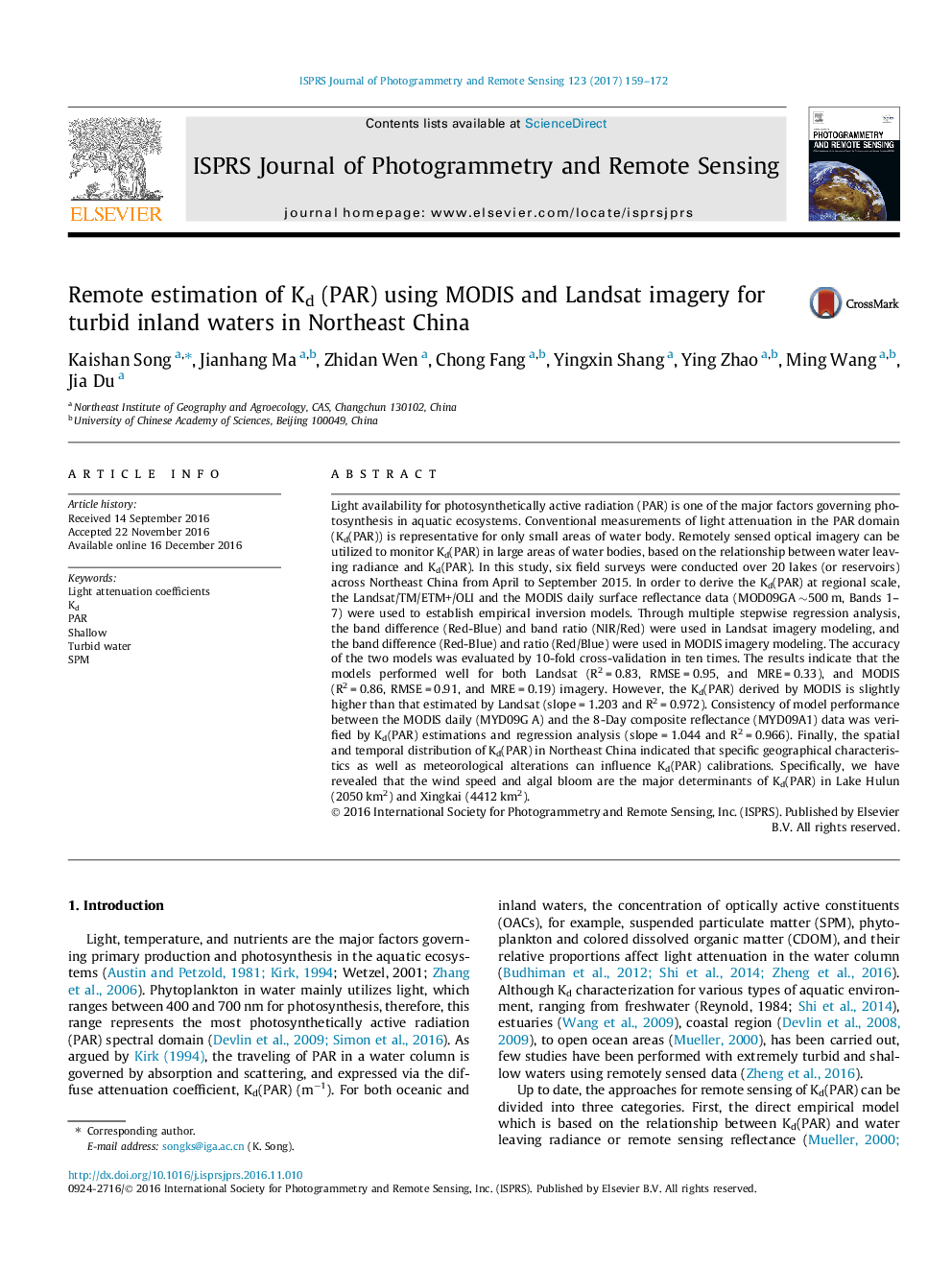| Article ID | Journal | Published Year | Pages | File Type |
|---|---|---|---|---|
| 4973006 | ISPRS Journal of Photogrammetry and Remote Sensing | 2017 | 14 Pages |
Light availability for photosynthetically active radiation (PAR) is one of the major factors governing photosynthesis in aquatic ecosystems. Conventional measurements of light attenuation in the PAR domain (Kd(PAR)) is representative for only small areas of water body. Remotely sensed optical imagery can be utilized to monitor Kd(PAR) in large areas of water bodies, based on the relationship between water leaving radiance and Kd(PAR). In this study, six field surveys were conducted over 20 lakes (or reservoirs) across Northeast China from April to September 2015. In order to derive the Kd(PAR) at regional scale, the Landsat/TM/ETM+/OLI and the MODIS daily surface reflectance data (MOD09GA â¼500 m, Bands 1-7) were used to establish empirical inversion models. Through multiple stepwise regression analysis, the band difference (Red-Blue) and band ratio (NIR/Red) were used in Landsat imagery modeling, and the band difference (Red-Blue) and ratio (Red/Blue) were used in MODIS imagery modeling. The accuracy of the two models was evaluated by 10-fold cross-validation in ten times. The results indicate that the models performed well for both Landsat (R2 = 0.83, RMSE = 0.95, and MRE = 0.33), and MODIS (R2 = 0.86, RMSE = 0.91, and MRE = 0.19) imagery. However, the Kd(PAR) derived by MODIS is slightly higher than that estimated by Landsat (slope = 1.203 and R2 = 0.972). Consistency of model performance between the MODIS daily (MYD09G A) and the 8-Day composite reflectance (MYD09A1) data was verified by Kd(PAR) estimations and regression analysis (slope = 1.044 and R2 = 0.966). Finally, the spatial and temporal distribution of Kd(PAR) in Northeast China indicated that specific geographical characteristics as well as meteorological alterations can influence Kd(PAR) calibrations. Specifically, we have revealed that the wind speed and algal bloom are the major determinants of Kd(PAR) in Lake Hulun (2050 km2) and Xingkai (4412 km2).
